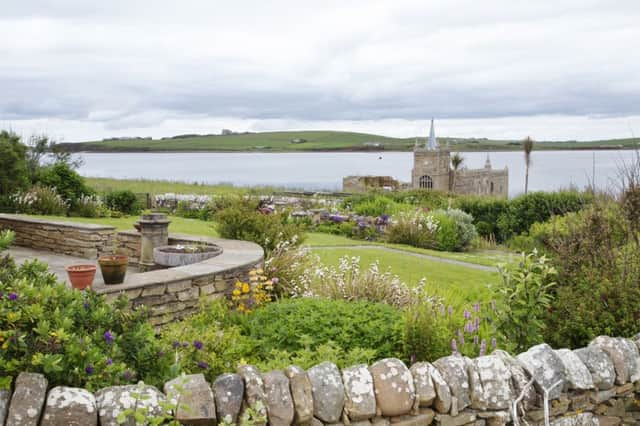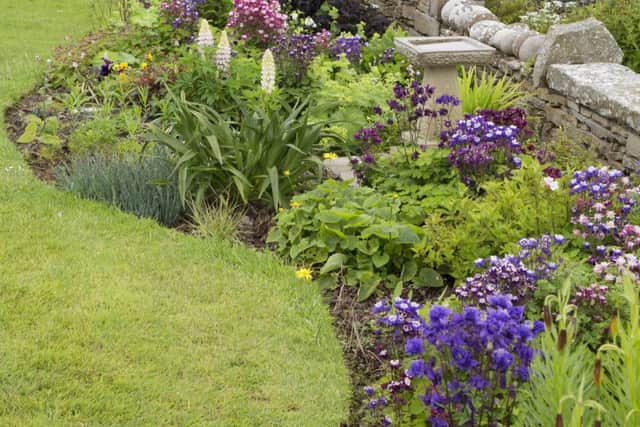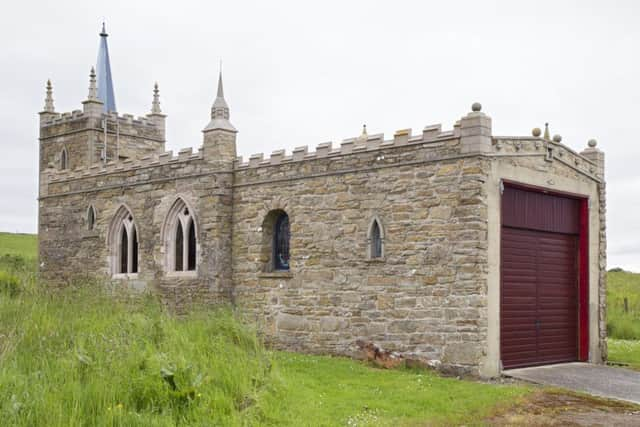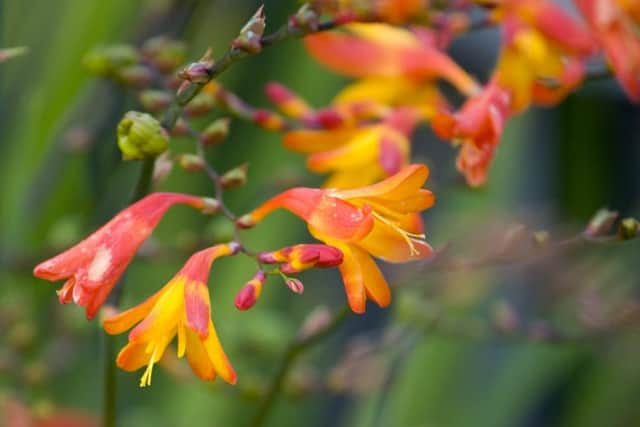South Ronaldsay garden a green Orkney haven


WHEN Gwen and Dunstan Holt’s Cambridgeshire house was purchased by a developer and razed to the ground to make way for a new town construction 17 years ago, the couple decided it was time for a new start. Gwen says: “We had been coming up to Orkney for many years and we both wanted to sail. Our children were grown up and keen to join us for holidays.” Grandchildren born since the couple moved up visit regularly in the summer.
They found a derelict house with a semi-sheltered, east facing, one-acre plot sloping down to the sea on the edge of Herston on the west coast of South Ronaldsay. The couple were instantly smitten by the views overlooking Widewall Bay with its rich variety of wildlife including gannets, oyster catchers, Arctic skuas and terns. With its layout of old stone walls and indications of a former vegetable garden, the site also offered the chance to observe the seals in the bay.
Advertisement
Hide AdAdvertisement
Hide AdThe first task was to replace the derelict house with a cosy home with sea views and once this was done the couple turned their attention to the garden. The result is a fusion of Gwen and Dunstan’s diverse interests: plants, sailing and, curiously, church architecture and a collaboration of work skills.


Dunstan’s love of church architecture is most clearly expressed in the medieval-looking church that sits on the edge of the shore. Closer inspection reveals that this is a boat shed. Dunstan says: “We retired here with a MacGregor 26 trailer sailer and it became apparent that a boat shed could be built by altering the derelict building on the shore.” This provided the perfect opportunity to fulfil long-held ambitions such as building an arch and finding a home for a collection of stained glass.
Help was recruited to build the eastern extension and fit some of the heavier decorative pieces, but the shed is mostly-home built and recycled materials were used throughout. Basic household pieces, such as the bottom of coca cola bottles, round lighting globes and plastic punnets were all used to cast base shapes. The pillar sections for the arch were cast in lengths of plastic drainpipe and the capitals, the topmost section, were made in plastic crates and the spire was made from uPVC sheets. Pinnacles were cast in old traffic cones and fitted with crockets in the shape of half a tennis ball.
Later detail includes an assembly of small, Gothic-style faces reproduced from originals carved by Dunstan’s father and set into the surround of the large, west-facing window. Natural stone was collected locally and used in the general wall facing allowing the building to blend into the landscape.
The shed had the added bonus of creating a focal point for the garden; it is complimented by the stone structure of the drystone walls and the paths that divide and link the layout of three main different spaces. Throughout, the crisp outline of the stone adds a contemporary feel while providing valuable shelter and protection for the plants. The curved and island beds are punctuated for year-round interest with cast features such as a bird bath and the balls that embellish the gateposts.


Gwen says that retaining the view is a balancing act: “The garden is very open, we don’t want to lose the views, but need shelter. In our last garden we lost all our views to plants and we are not going to lose them here.” Nothing is allowed to grow too tall and, as a result, the green grass offers a striking contrast to grey skies and seas.
Gwen’s attitude towards her choice of plants was relaxed: she happily admits she is not a plants person and that their names tend to elude her. “I’ve never done organised planting,” she says. “I just worked with plants I was given, some of them I have no idea how they got there. If a plant wants to grow and survive, I just let it.”
Despite preparing the soil with well-rotted locally supplied dung, this garden, like many others on the islands, has suffered its share of losses; plants have been moved in search of the right place while others have disappeared without trace. But many have flourished, self-seeding and spreading to create an informal, cottage garden effect in a palate of blues, purples and pinks, spiked with dashes of yellow.
Advertisement
Hide AdAdvertisement
Hide AdSuccesses include peony, sweet william, different aquilegia, lupins, campanula, oriental poppies and lilies. The spiky foliage of late-flowering orange crocosmia offers a useful contrast to the rounded mounds of lupin foliage while complementing Libertia grandifloria. Hebe and fuchsia survive the salt laden winds, but philadelphus fails to flower. “Every year it gets its marching orders but I never get around to moving it.” Plants are often started and nurtured in a small greenhouse assembled from recycled materials: currently delphinium is being raised from seed.


For Gwen, part of the enjoyment of this garden is the fun of being outside. “On average I need an hour a day to maintain the garden,” she says, “but it doesn’t always work out like that.”
• The Herston Gardens Trail, South Ronaldsay, Orkney, is open under Scotland’s Gardens on two Sundays in June and July 2016, 11am-6pm; www.scotlandsgardens.org